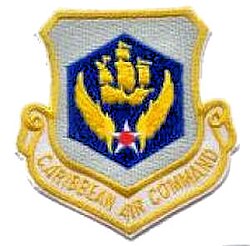| United States Air Forces Southern Command | |
|---|---|
 USAF Southern Command emblem | |
| Active | 20 November 1940 – 1 January 1976 (35 years, 1 month) Detailed
|
| Country | |
| Branch | |
| Type | Major Command |
| Garrison/HQ | Howard Air Force Base, Panama |
| Engagements | World War II - Antisubmarine |
| Commanders | |
| Notable commanders | Hubert R. Harmon |
The United States Air Forces Southern Command is an inactive Major Command of the United States Air Force. It was headquartered at Albrook Air Force Base, Canal Zone, being inactivated on 1 January 1976.
Contents
Initially designated Panama Canal Air Force when first established in October 1940, its mission was the defense of the Panama Canal. Later it took on United States Air Force relations, including foreign military sales (FMS) and disaster relief assistance, with the Latin American nations. The command supported disaster relief to countries such as Guatemala, Jamaica, Nicaragua, the Dominican Republic, Panama and Colombia. It also assisted states in Central and South America in purchases of United States military aircraft and trained their technicians in logistics and maintenance for the aircraft.























